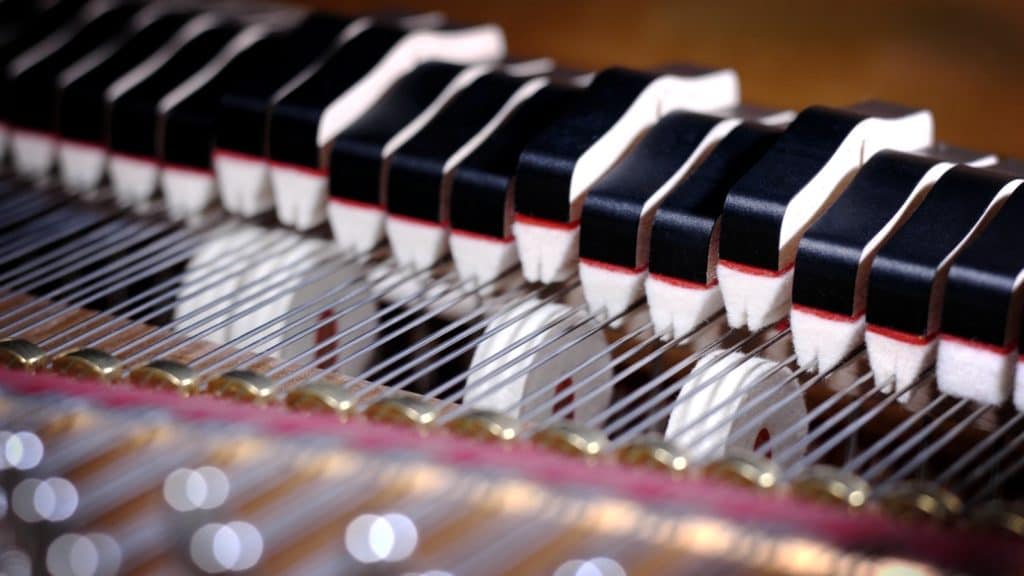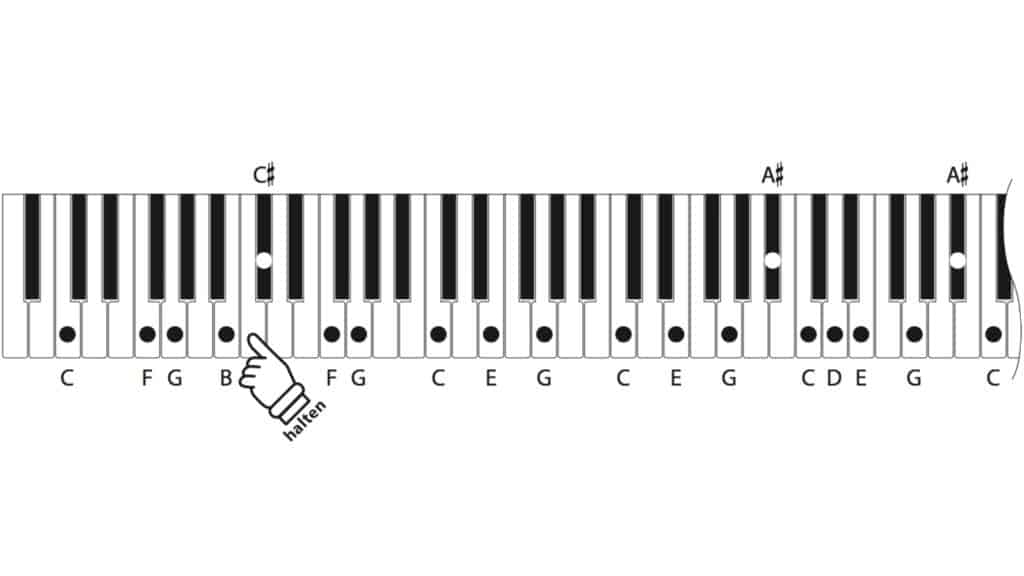Sympathetic resonance is an essential part of any piano sound. These resonances occur between harmonically related notes, hence the term “sympathetic”. While the interaction of strings and damper is the source of sympathetic resonance on an acoustic piano, it must be artificially recreated on a digital piano.
String Resonances Are Complex
Damper resonance on digital pianos refers to resonances that occur in direct connection with the damper (sustain) pedal. Here, all strings are free to vibrate. In contrast, in acoustic and upright pianos the string of a single note (played without sustain pedal) can also resonate in sympathy when you play other notes. How and to what extent a string resonates depends on whether the notes struck match the overtone spectrum of the undamped string. When talking about digital pianos, this overtone-dependent interaction is for example called Sympathetic Resonance (Roland Piano Designer), String Resonance (KAWAI Virtual Technician), or Virtual Resonance Modeling (VRM, Yamaha Piano Room/Smart Pianist).
There must be a relation between the overtones of the resonating notes. If that’s the case, sympathetic resonance can shape the sound significantly, even when you play in only two voices. However, these resonance effects are much more subtle than the damper resonance when playing the sustain pedal. Nevertheless, they are an essential part of the harmony of the notes and chords you play. The matching overtone spectrum results in complex relations that dynamically influence the sound of an acoustic grand piano.
The sound generators of modern digital pianos have fairly authentic-sounding simulations of sympathetic resonance. In addition, you can even customize the sound characteristics. Some digital pianos generate string resonances using special samples, while others use physical modeling technology.


